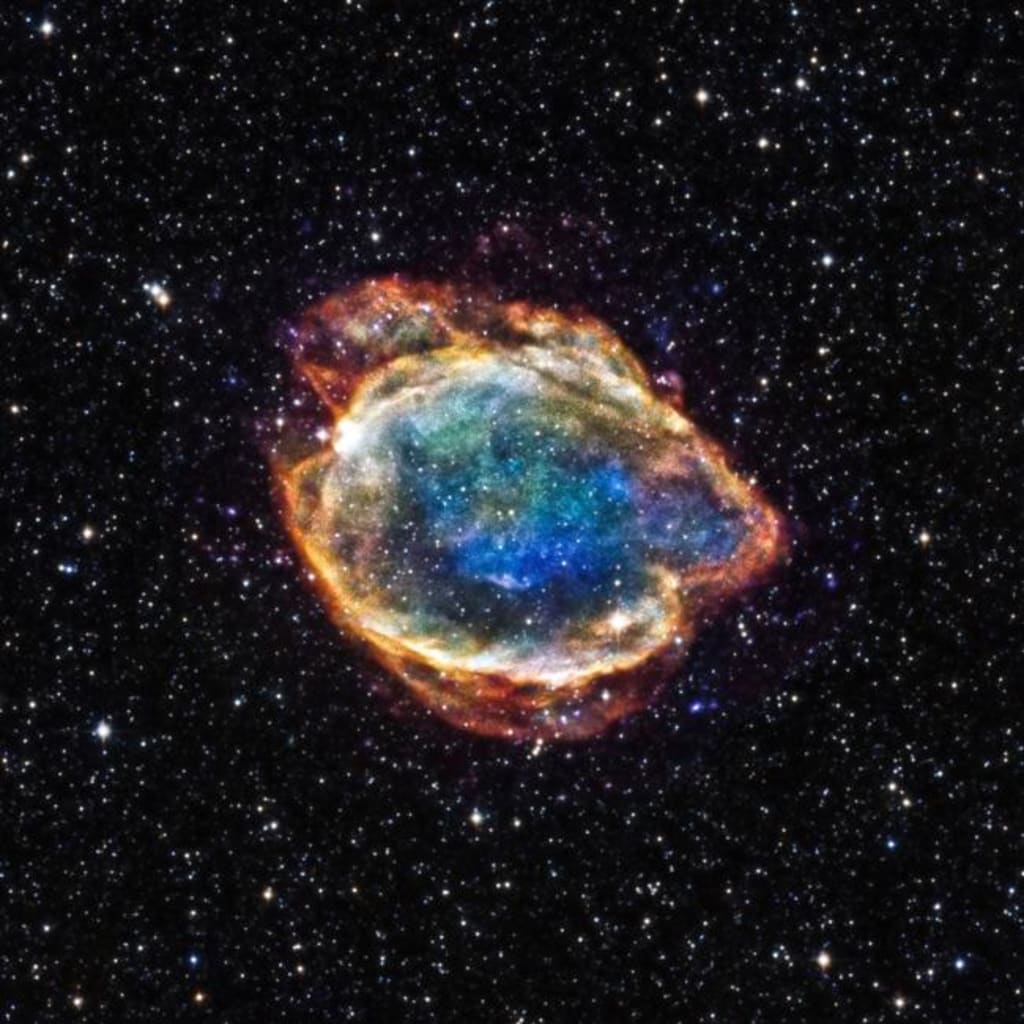DARK ENERGY MEASURED MORE PRECISELY THAN EVER
Dark energy is the term scientists use to describe the cause of the accelerated expansion of the universe. Find out how a new analysis provides its most precise measurement yet.

Attending the University of Toronto doesn’t make you an academic superstar. I’m living proof of that.
Even so, as Canada’s top-ranked university, spending time at U of T does give you the privilege of hanging out with a few of them. I had several eminent professors there.
One of them was Professor Emeritus John Percy. He always made a point of teaching an introductory astronomy course aimed at non-science majors as part of his lifelong commitment to science education.
DIDN’T REALIZE UNIVERSE’S EXPANSION WAS ACCELERATING
When I took Professor Percy’s course in the 1980s, several things that preoccupy cosmologists today hadn’t been discovered yet. For example, although the Big Bang theory was fairly well established, scientists didn’t realize that the expansion of the universe was accelerating.
That realization led to one of cosmology’s two greatest mysteries – dark energy. The other, earlier mystery is called dark matter.
Dark matter has the longer history of the two. As far back as 1884, the prolific scientist Lord Kelvin tried to estimate the mass of our galaxy.
DISCREPANCY BETWEEN TOTAL MASS AND GRAVITATIONAL EFFECTS
He found a discrepancy between the total mass of all the stars he could see and the gravitational effects he measured from the velocities of those stars. Henri Poincare referred to this discrepancy, and was the first person to use the phrase “dark matter” to describe it.
Fritz Zwicky was studying galaxies in the Coma Cluster. He compared the gravitational effects of the galaxies’ motion to his estimate of their total mass.
He also found a discrepancy, and not some trivial distance we could attribute to some sort of measurement error. He found that the Coma Cluster displayed 400 times more gravity than its mass could account for, suggesting the universe contains some kind of “missing matter.”
STRONGER GRAVITATIONAL EFFECTS THAN WE CAN EXPLAIN
Scientists have refined their calculations based on these observations, but the result is always the same. We see far stronger gravitational effects in the universe than we can account for based on how much matter we can see.
In the case of dark energy, its discovery came later. Two teams discovered that the expansion of the universe is accelerating in 1998.
They were looking at Type Ia supernovas, the remnants of exploded white dwarf stars. Since these remnants have very intense and consistent brightness, astronomers can use them as “standard candles” to measure distances.
ACCELERATED EXPANSION DISCOVERY WON NOBEL PRIZE IN 2011
They found that the supernovae were fainter, and therefore further away, than they expected. This meant the expansion of the universe is accelerating. This discovery won them the Nobel Prize in Physics in 2011.
Some sort of energy has to be causing that acceleration. Building on the term used for the matter discrepancy, cosmologists adopted the term “dark energy” to describe this unknown energy source.
Last week, The Astrophysical Journal published a special issue. It contains a series of papers on Pantheon+, a powerful new analysis that calculates the most exact parameters ever set on what the universe is made of and how it evolved.
MOST EXACT CONSTRAINTS EVER SET ON NATURE OF UNIVERSE
The lead author of the studies is Professor Dillon Brout. He’s an Einstein Fellow at the Center for Astrophyics: Harvard and Smithsonian. An observational cosmologist, he’s been using Type Ia supernovae to map the dynamics of the universe throughout his career.
“With these Pantheon+ results, we are able to put the most precise constraints on the dynamics and history of the universe to date,” Professor Blout explains.”We’ve combed over the data and can now say with more confidence than ever before how the universe has evolved over the eons and that the current best theories for dark energy and dark matter hold strong.”
Pantheon+ uses a massive dataset of over 1,500 Type Ia supernovae. It’s the product of ongoing research published by astronomers around the world over the past twenty years.
PRODUCT OF OVER 20 YEARS OF ONGOING GLOBAL RESEARCH
Professor Adam Riess was one of those scientists who shared the 2011 Nobel Prize for their discovery of the universe’s accelerating expansion. Professor Blout was once his student. He’s the Bloomberg Distinguished Professor at Johns Hopkins University and the Space Telescope Institute in Baltimore.
“In many ways, this latest Pantheon+ analysis is a culmination of more than two decades’ worth of diligent efforts by observers and theorists worldwide in deciphering the essence of the cosmos,” Professor Riess explained.
Professor Blout teamed up with Professor Dan Scolnic of Duke University to build on this body of research. Together, they’ve added 50% more records of supernovae, improved the analysis techniques and worked out some bugs in the datasets.
ANALYSIS FOUND THAT 66.2% OF UNIVERSE IS DARK ENERGY
This rigorous new analysis found that 66.2% of the universe in dark energy. Ordinary and dark matter make up the other 33.8%.
There’s another aspect of the universe’s expansion that’s been frustrating researchers for the last two decades. It’s the rate of the expansion, which cosmologists call the Hubble constant.
There are two ways to measure the Hubble constant, and each method yields a different answer. Everyone assumed that further research would narrow down this inconsistency, called the Hubble tension, but so far that hasn’t happened.
PANTHEON+ ANALYSIS DOESN’T RESOLVE HUBBLE TENSION
Pantheon+ has weighed in on the controversy, providing a figure of 73.4 kilometers per second per megaparsec. Its margin of error is just 1.3%.
This is consistent with all the other attempts to measure the Hubble constant based on supernovae. However, scientists can also calculate the Hubble constant using the energy remaining from the Big Bang called the Cosmic Microwave Background.
Doing it that way, the answer is always cones out closer to 67. So, Pantheon+ confirms that this difference isn’t just a measurement error or statistical noise.
“PROFOUND DISCREPANCIES REMAIN AS STUBBORN AS EVER”
We thought it would be possible to find clues to a novel solution to these problems in our dataset, “Professor Blout said,”Instead we’re finding that our data rules out many of these options and that the profound discrepancies remain as stubborn as ever.”
We all seem to have a deep need to understand the world around us and our place in it. We’re looking to science to provide us with a new story to satisfy that burning desire.
PROJECTS LIKE PANTHEON+ CAN OFFER SOLUTIONS TO MYSTERIES
Getting a better handle on the expansion of the universe and the nature of dark energy is an important chapter in that story. Projects like Pantheon+ can offer solutions to these mysteries.
Professor Brout concluded, saying, “This dataset is a unique opportunity to see dark energy turn on and drive the evolution of the cosmos on the grandest scales up through present time.”
We always have more to learn if we dare to know.
Learn more:
The Most Precise Accounting Yet of Dark Energy and Dark Matter
The Pantheon+ Analysis: Cosmological Constraints
Measuring Dark Energy Just Got Way More Precise
About the Creator
David Morton Rintoul
I'm a freelance writer and commercial blogger, offering stories for those who find meaning in stories about our Universe, Nature and Humanity. We always have more to learn if we Dare to Know.






Comments
There are no comments for this story
Be the first to respond and start the conversation.